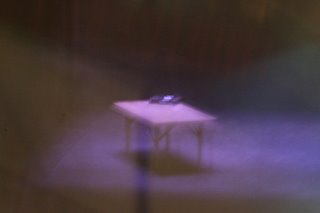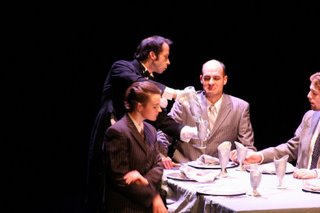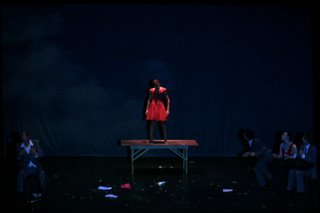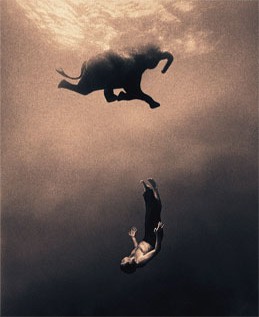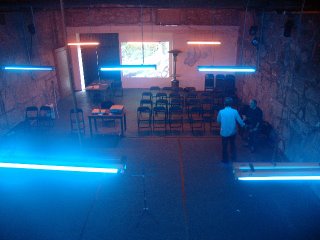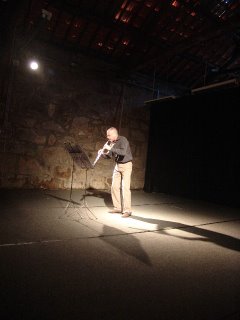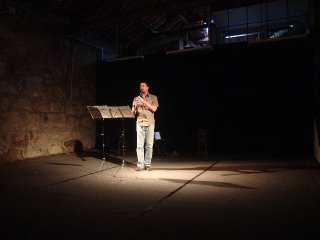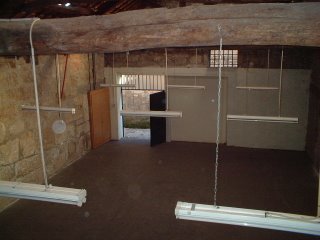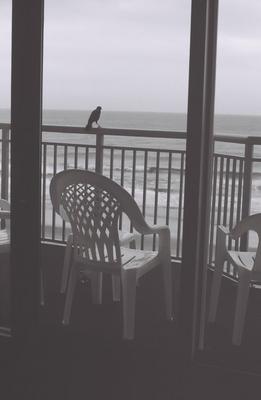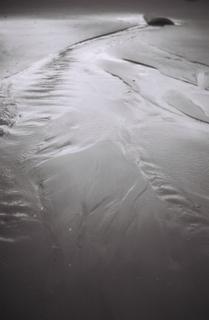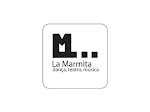
Coreografia: Andrea Gabilondo , baseada na partitura de “Atem” de Maurício Kagel
Interpretação: Robert Glassburner
Gravação em estudo: Robert Glassburner e Tilike Coelho
Mauricio Kagel escreveu para a estreia de Atem no Curso Internacional de Nova Música em Darmstad em 26 de Agosto de 1970: “ Um dos meus vizinhos é um instrumentista de sopros aposentado. A sua actividade principal nestes dias é a de preparar palhetas para os colegas. Para verificar a qualidade das palhetas, ele sempre toca a mesma curta sequência de notas ( floreado/ rápido/ floreado/ pausa/ floreado).
O filho do velhote também mora na mesma casa, é trinta anos mais jovem e também é músico. Toca o trombone.”
A partir de aqui Kagel cria Atem, uma composição para um instrumentista de sopros a solo e gravação de efeitos de som na qual se desenvolve uma cena: um músico entra, senta-se e toca. As notas que tenta tocar, poucas vezes saem limpas provocando um monólogo interior onde o texto consiste em sons em vez de palavras. Nesta evocação da visão do teatro de Samuel Becket, o músico envelhece, e ao final incapaz de tocar sem distorção, morre...
A coreografia baseia-se nesta partitura, tomando liberdades teatrais e de movimento; todos os elementos da peça musical estão presentes mas elaborados de outra forma, sendo explorados através da linguagem de Dança-Teatro e restrito cenicamente a um mundo geométrico ao nível da luz.
Robert Glassburner
Natural dos Estados Unidos, estudou na Wichita State University com Michael Dicker e Dennis Michel, com Harold Goltzer da Filarmónica de Nova Iorque e com Arthur Weisberg na Yale School of Music.
Foi fagotista solista na Connecticut Philarmonic, Orquesta Sinfónica de Maracaibo, Venezuela, Ópera do Teatro de Bellas Artes-Cidade do México, no Teatro S. Carlos-Lisboa, e foi associado com a Limburgs Symphonie Orkest- Maastricht, o Ensemble Ad Libitum-Maastricht, a Orquesta Sinfónica de Galicia, e a Radio Filharmonisch Orkest-Hilversum. Foi artista convidado no Orlando Festival (Holanda), 1992.
Foi premiado na National Collegiate Solo Competition e no Concours International de l’UFAM ( Paris).
Desde 1995 é professor de fagote e música de câmara no Conservatório de Música do Porto e na Escola Profissional de Espinho.
Em 1993 ingressa na Orquestra Nacional do Porto onde toca actualmente como
solista A
Sequenza VII para Oboé

Música: Luciano Berio
Aldo Salvetti, Oboé
Notas do compositor:
“O teu perfil é a minha paisagem frenética, segurada à distância
É um fogo de amor falso, que é insignificante: é morto”
Sequenza VII é habitada duma espécie de conflito permanente – para mim muito expressivo e as vezes dramático – entre a velocidade extrema da articulação instrumental e a lentidão do processo musical que sustenta o percurso da obra: por exemplo ter uma certa imobilidade dos registros, uma prolongada ausência de algumas notas e a gradual invasão de certos intervalos, (como a quinta perfeita, por exemplo, que faz lembrar o famoso solo de corno inglês da ópera “Tristan e Isolde” de Wagner).
Com a Sequenza VII (como com as Sequenzas para flauta, tromba, clarinete, trombone e fagote) prossegue-se a minha pesquisa duma polifonia virtual. Nesta Sequenza, a parte solista é colocado em perspectiva, se fosse analisado pela presencia constante de uma “tónica”, um Si natural, que podia ser tocado em pianíssimo por qualquer instrumento fora do palco.
Sequenza VII foi escrito em 1969 para o oboista Heinz Holliger.
Aldo Salvetti
Nasceu em Veneza, onde aos 20 anos començou o estudo do oboé con Giorgio Trentin.
Em 1987 diplomou-se no Conservatório de Música "Giuseppe Verdi" de Milão, na classe de Giacomo Calderoni.
Concluiu o Curso de Licenciatura em Basileia e em Zurique, com Emanuel Abbhül e Thomas Indermühle.
Integrou a Orquestra Nacional da Academia de Santa Cecilia em Roma, e colaborou regularmente com a Symphonisches Orchester Zürich e a Basel Sinfonietta.
Foi Primeiro Oboé da Orchestra Sinfonica Siciliana e Chefe de Naipe dos Oboés da Vogtland Philharmonie Greiz-Reichenbach.
Desde 1996 reside em Portugal, onde foi Primeiro Oboé da Orquestra Clássica do Porto e, actualmente, è Chefe de Naipe da Orquestra Nacional do Porto.
Colabora regularmente, desde a sua criação em 2001, com a OrchestrUtópica.
Desde 1997 è professor de Oboé e Música de Conjunto na Escola Profissional de Música de Espinho.
È docente da Licenciatura em Música da Universidade Católica Portuguesa, no Porto, e do Istituto Piaget, Campus Universitário de Almada.
New York Counterpoint
Concerto para clarinete de música minimalista
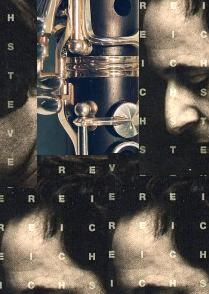
Música: Steve Reich
Gergely Süto, clarinete solo e clarinetes pré-gravados
Notas do compositor:
“New York Counterpoint” foi escrito em 1985, como encomenda da Fundação Fromm para o clarinetista Richard Stoltzman.
A obra segue uma ideia já utilizada em Vermont Counterpoint (1982) onde um solista interage com uma gravação previamente feita pelo mesmo intérprete. No caso de New York Counterpoint, a gravação consiste de dez vozes de clarinete e clarinete baixo com a décima primeira voz tocada ao vivo em cima da gravação.
A peça tem três andamentos: rápido, lento, rápido, que se tocam seguidamente e sem pausa. O compasso da peça é 3/2 = 6/4 (=12/8), com as mudanças de tempo em relações proporcionais simples. Especialmente no terceiro andamento Reich aproveita as ambiguidades rítmicas desta batuta, juntando três grupos de quatro ou quatro grupos de três notas, marcando a diferença só pela mudança da
acentuação.
Gergely Süto
Gergely Süto nasceu em Budapeste, Hungria, em 1972. Começou a estudar clarinete aos dez anos de idade. Em 1992, obteve o diploma de solista na classe de Robert Kemblinsky, no Conservatoire de Lausanne, Suiça. Posteriormente, especializou-se em clarinete baixo com Jean-Marc Volta, em Paris. Recebeu vários prémios em concursos nacionais suíços e em 1992 ganhou o 2° prémio no Concours International de Sonates de Vierzon (França), com o pianista Cédric Pescia. A partir de 1993, foi instrumentista convidado da Orchestre de Chambre de Lausanne e durante a temporada 1995-96, foi convidado para o lugar de 1° clarinete na Orchestre Symphonique de Bienne, Suiça. Em 1997, numa primeira incursão em Portugal, colaborou como segundo clarinete na Orquestra Gulbenkian, Lisboa. Entre 1998 e 2000, actuou com a Filarmonia Nacional da Hungria. Desde 2000, é músico da Orquestra Nacional do Porto. Para além da carreira de música clássica, Gergely Süto tem desenvolvido actividades musicais paralelas no âmbito da composição, improvisação e música electrónica.
Vídeo
Noelle Greorg, Carlos Carrilho e Antje Feger/Benjamin Florian Stumpf

Organização: Claudia Mel
"Em quantas coisas que me emprestaram eu sigo no mundo. Quantas coisas que me emprestaram guio como minhas!" Álvaro de Campos
Ocupar um espaço, na cidade, na cultura.
Encontrar um lugar e fazê-lo próprio, pátilhar-lo com os outros... produzir, criar. Os recursos estão à volta. Deixar marcas.
Noelle Greorg
La rue est a nous
A rua e nossa e um film sobre a occupacao do espaco publico. E o latin squat
mini dv, cores, som 2min46, 2005
Carlos Carrilho
I Belong
video, p/b, som, 07'50", 2005
Esperrei tanto tempo. Foi isto que vim, de tao longe, procurar? Sinto que algo me observa, aguardando por mim. Mas não fugirei. Que engraçado! Tudo isto é tão feio e no entanto tão confortavel! Nunca, nunca mais quero sair de aqui.
Antje Feger/Benjamin Florian Stumpf
Video, cor, 04'59'', 2005
trafic-time-space/us in between/non stop-stop
Este evento está inserido dentro da programação, "Gaia ConVida", uma iniciativa da Câmara Municipal de Gaia.
Apoios:
Câmara Municipal de Gaia
Dois Pontos- Associação Cultural
Pé de Vento
Teatro Helena Sá e Costa
Produção: La Marmita
